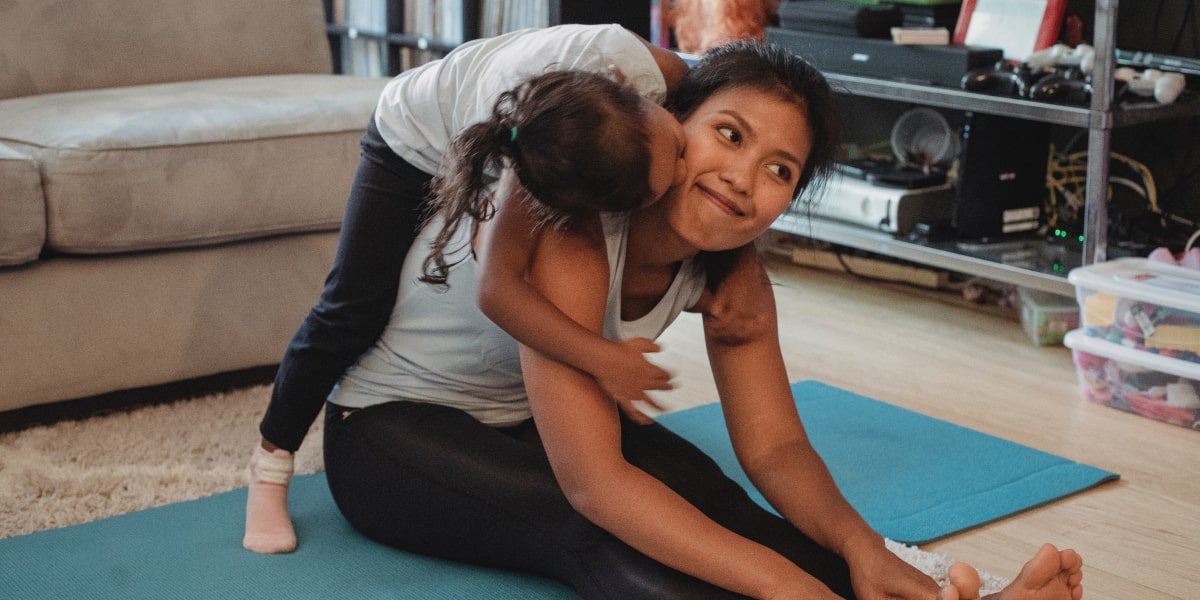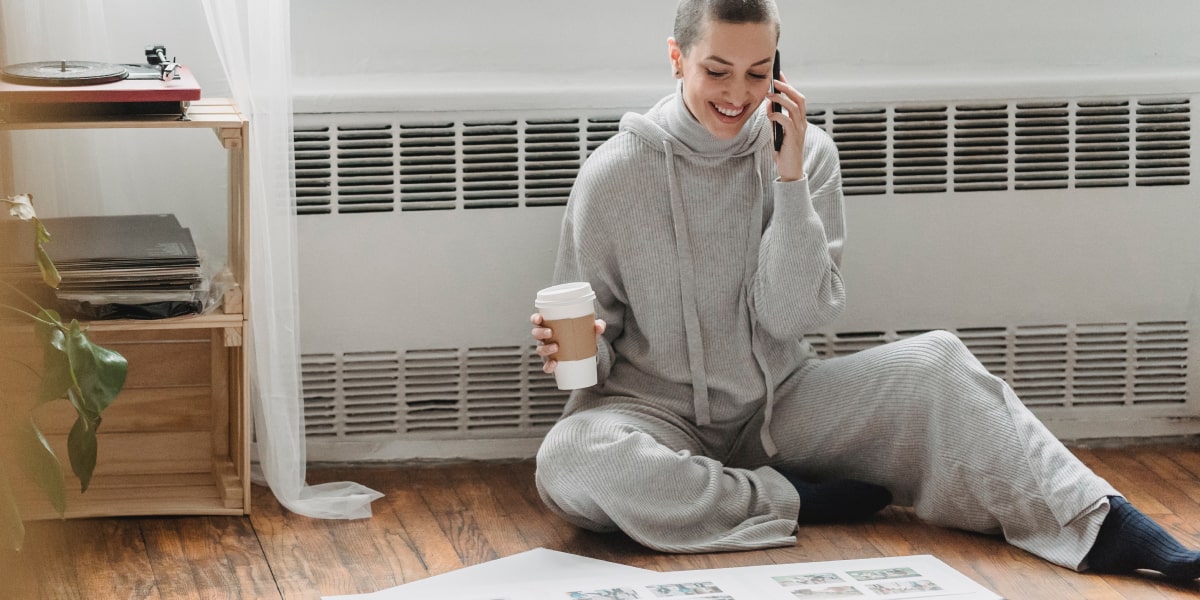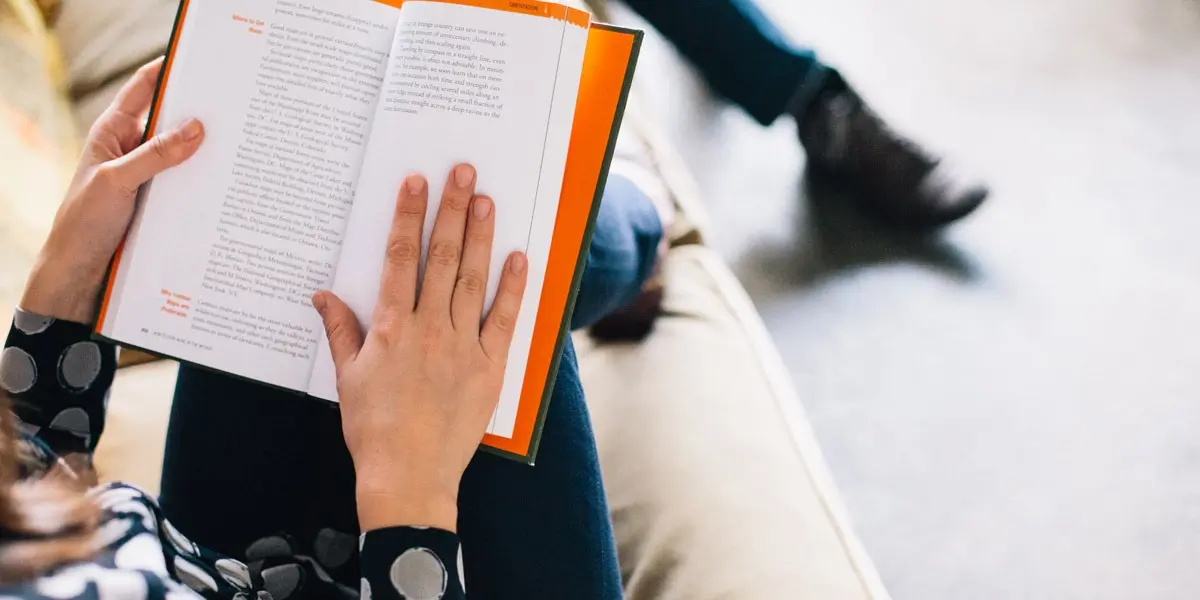As a new, aspiring, or even seasoned UX designer, you’re bound to encounter a common problem: Creative block. So how do you overcome it? We’ve got solutions for you.
There’s nothing more frustrating than creative block—and it’s not just writers and artists who suffer. UX designers experience it, too, and it can strike at any moment!
There are many types of creative block, but it always leads to the same frustrating reality: an inability to come up with new ideas. You’ve hit a wall and you can’t seem to get inspired. It may be the result of perfectionism, a subconscious fear of failure or criticism (imposter syndrome is so common!), or merely a sign that you need to expand your creative horizons.
Whether you’re studying UX design and tackling an assignment, or working on a project for a client, the sight of that relentlessly blank canvas staring back at you can quickly sink you into despair.
You could take a week off and hope that it works itself out. But in the real world of deadlines and time constraints, it’s not usually an easy option for a UX designer to just take unplanned time off. When creative block strikes, you need to be proactive and tackle it head-on.
No matter what stage you’re at in your design career, having an arsenal of creative-block-busters at the ready will help you stay productive and keep the ideas flowing.
Here are nine ways to haul yourself out of a creative rut:
- Be prepared
- Embrace imperfection
- Construct creative boundaries
- Take a break
- Get moving
- Chat with others
- Go back to basics
- Take risks
- Design for fun
Without further ado, here are our nine tips for busting through creative block.
1. Be prepared
Creativity comes in peaks and troughs. Don’t take it for granted when you’re riding high: make the most of it and store it up for those creative dry spells! Inspiration can hit when you least expect it, so be ready to capture it at any moment.
Even when you’re not sitting at your desk or officially “in the zone,” have a notebook or sketchbook to hand. Whenever new ideas pop into your head, jot them down. This way, you can refer back to them for inspiration next time you hit a wall.
What other creatives recommend:
“Remember that nothing is original. As Albert Einstein said, the secret to creativity is knowing how to hide your sources. The same can be said of music, design, even food…everything is a product of its environment, so take inspiration from what’s around you and don’t get hung up on trying to create something that’s never been done before.”
— Sameed, musician“I don’t go anywhere without some kind of note-taking element, whether it’s a pad of stick notes, a notebook, or the notes app on my phone. And I find myself jotting down ideas that come from the most random places—in a coffee shop, at the grocery store, or on public transport. I was climbing a rope course last week and had to take a break just to jot an idea down before I forgot it. You never know when inspiration will strike.”
— Emerson, UX writer
2. Embrace imperfection
If you’re a perfectionist by nature, you might feel like it’s better to produce nothing at all than to produce something mediocre. It’s good to take pride in your work and hold yourself to high standards, but this can be counter-productive.
If you’re facing creative block, throw your perfectionist tendencies out the window and just get cracking. Even if your first draft is rubbish, it’s the starting point you need — something you can build upon and improve. Don’t overthink things: just dive right in.
What other creatives recommend:
“Get away from your screen. Take a walk or grab a coffee and let the thoughts percolate in your head. Remind yourself of the original problem and why you’re working on it. When you come back, take a fresh start at it with a focus on getting something done.
For myself, I think a lot of creative blocks come from perfectionism and getting lost in the details. Taking a break from the computer allows me to get perspective on what I’m doing. I usually return with newfound purpose and quickly get a prototype going.”
— Jeff, UX designer
“Impose an artificial deadline. This isn’t to stress yourself out or to get things done faster and be overly-productive! But I’ve done some of my best work on artificial deadlines.
I tell myself, ‘Alright. You’re going to draft this product page in 15 minutes.’ Is that an unreasonable deadline? Probably! But it helps me get past my perfectionism, to write a (probably shitty) first draft, and get on with the creative process.”
— Emerson, UX writer

Photo by Michael Burrows from Pexels
3. Construct creative boundaries
Too much creative freedom can be overwhelming. Perhaps you’ve got so many half-formed ideas floating around that it’s impossible to get clarity; maybe the horizon is just so vast, you can’t even pick a starting point. If being spoiled for choice is literally spoiling your creativity, remove some options.
Believe it or not, boundaries can actually bring your creativity to life. Take architect Frank Gehry, famous for building the Guggenheim Museum in Bilbao, Spain, and the Disney Concert Hall in LA, who claims that limitations and constraints are what really inspires his work.
Another great example is an anecdote featured in Zen and the Art of Motorcycle Maintenance, where Pirsig describes how he helped one of his students to overcome her creative block. Faced with the task of writing an essay about the town of Bozeman, she just couldn’t get started.
Pirsig advised her to narrow her field of focus to one specific brick of the opera house building—and, upon taking this advice, she couldn’t stop writing!
The design brief should already set some limitations to work with, but if you’re still feeling stuck, try setting some boundaries of your own; you’ll be surprised what you can come up with!
What another creative has to say:
“When I’m feeling stuck for answers, I go back to my user research and personas and find the most specific details about my users and try to write or design for that level of specificity.
It can also help to impose tighter spacial constraints—instead of writing this CTA or heading in X number of characters, what if I write it in half that? What happens then?
You can always lift those additional contstraints later! You’d be surprised at how creative you can get in a tighter space.”
— Emerson, UX writer
4. Take a break
If sitting and staring at a blank canvas (or screen) is getting you nowhere, it’s time to take a break.
Step away from the situation for a change of scenery and let your mind wander. Research suggests that taking regular breaks to focus on something unrelated enhances your ability to generate new ideas and stay focused on the task at hand.
Even if you’re under time pressure, don’t be afraid to switch off for a bit. Take a walk outside, swap your office for a coffee shop or read a book—anything that distracts you. You’ll return to your work with a renewed sense of focus, and be open to new perspectives and ideas.
What another creative recommends:
“My number one tip is to do something else! Try to remove the thing you’re not inspired about from your thoughts for some time. Of course, it depends on time pressure, but I find it helps to set yourself a time or date to pick it up again with a clear, fresh head. Number two: look for inspiration.
There are so many sources online dedicated to this, but personally I feel most inspired outside, so I usually take a walk and look around at architecture, nature, patterns, typography, posters, etc.”
— Amy, UI designer

Photo by Kamaji Ogino from Pexels
5. Get moving
Certain studies have shown that physical activity can help to get your creative juices flowing. When creative fatigue sets in, try going for a run, dancing to some music or doing some star jumps to get the blood pumping. As Friedrich Nietzsche once said, “Sit as little as possible.”
For many people, movement is actually fundamental to the way they function—like the dancer in Ken Robinson’s TedTalk on creativity, who needed to move in order to think. Exercise helps to clear your head, improve cognitive processes, and provide a welcome distraction from that problematic design challenge that’s got you stuck.
What another creative has to say:
“I’ve always been quite a fidget, and struggle to sit still. Some people say they can’t sit still for more than ten minutes–I sometimes think I can’t sit still for more than ten seconds. I’m your annoying colleague whose leg doesn’t stop thrumming in the chair next to you in the post-lunch meeting.
Creativity and originality are often borne from the confluence of two fields. A designer may garner ideas from a great novel, or the patterns and logic of the natural world.
Just as fluidity between fields is important, so is fluidity between states–between, for example, the state of quiet, uninterrupted contemplation and the state of non-strenuous movement, whether that be strolling around the office or a quick game of table tennis.”
— Ed, writer
6. Chat with others
They say a problem shared is a problem halved, and this is very true of creative block. UX designers don’t work in isolation, so they shouldn’t ideate in isolation. Chat with others around you, be it colleagues, your UX mentor, or friends and family. Get their take on things!
They might not have the full solution, but they may say something that triggers an idea in your head. At the very least, talking to others will get you looking at the problem from a different angle—a real life-saver if you’re struggling with creative block.
If you’re short on people to talk to in the moment you need to talk to them, you can explore other brilliant examples of UX design and imagine your way into the process that led there. Or check out our favorite UX design blogs for some inspiration.
What other creatives say about this:
“If I’m not sure which UX approach to take, or when a project hits a roadblock, I find that having conversations with stakeholders helps—so I recommend walking around the room. Don’t be afraid to strike up a conversation with a colleague about it, even if they’re not directly involved.
You’ll find that, as you talk it through out loud, the real problem will often present itself. Why rely on your own tunnel vision? You have an office full of smart colleagues who will point out the shortcomings of your designs in seconds.
The whole point of UX is to collaborate on something that brings value to the user. Creative blocks are just a good reminder that it’s time to collaborate. No one can design something perfect all on their own.”
— Jeff, UX designer
“As a writer, I always require some time away from the text and away from other people to think about different angles or approaches and overcome the block.
Once I have a few angles, I might approach a sympathetic colleague—someone who’s willing to act more as a soundboard or “coach” rather than try to offer a ready-made solution. Vocalising ideas often helps you recognise flaws in your approach or logic.
If I don’t have the luxury of a sympathetic ear and only a blank screen in front of me, I actually just make a start. The blank screen is a greater enemy than a badly worded idea.
True, your first few sentences will likely be met with your own hyper-criticism, but I prefer to accept its essential sh*t-ness and just get something down.
I find that it actually sounds better than you expect when you come back to it after a break. It can be rejigged and rewritten, but at least the idea is there.”
— Ed, writer

Photo by Alexander Suhorucov from Pexels
7. Go back to basics
If you find yourself hitting a creative wall, it might be because you’re not ready. UX design is all about solving a user problem, but if you’re struggling to put yourself in the user’s shoes, the design part won’t come easy. Try revisiting the previous stage of your workflow.
Go back over your research and spend more time getting to know your user personas. It might feel like regression, but sometimes going back a few steps is exactly what you need in order to move forwards.
What another creative recommends:
“For a UX designer or writer, I think the most important question to return to is: What does my user need in this moment? If I lose sight of the people I’m writing and designing for, then I’m not doing my job!
If you’re feeling stuck, try going back to your original problem statement. That will get you back in touch with the people you’re creating experiences for. Or go back an re-watch or review the conversations you had with individual users! It’s all about that human element.”
— Emerson, UX writer
8. Take risks
It’s good to fall back on tried-and-tested methods, but in times of creative block, you need to shake things up. Don’t get stuck on the notion that you need to reinvent your last successful project; innovative design is all about taking risks, after all.
Something as simple as experimenting with new styles or turning to unusual places for inspiration could be enough to spark new ideas. Don’t be afraid to think outside the box—it’s the only way to discover new things and constantly evolve as a designer.
What another creative recommends:
“For UX design, experimentation is key. As Ernest Hemingway supposedly said, ‘The first draft of anything is sh*t.’ I try to remind myself of that everyday. Instead of perfecting something in my own little design cave, I try to experiment with things.”
— Jeff, UX Designer
9. Design for fun
Having to be creative on demand can take its toll. If you’re really struggling to get started, step away from the project and design something just for fun instead.
Take away the pressures of time and other people’s expectations and see where you end up. This will help get you back into the design flow, and also serves as a timely reminder that you are good at what you do—giving you the courage you need to tackle that “problematic” project.
What another creative says about this:
“Whenever I’m stuck for ideas, I like to take some time out to work on a side project. This allows me to experiment with different ideas and tools, completely unrelated to what I’ve been working on.
Passion projects are a great opportunity to learn new skills and develop your portfolio—but also to expand your creativity.
It’s different to your day to day work—there are no deadlines, no rules or pressure from colleagues or clients. Your side project doesn’t need to be huge, it can be as simple as taking a short series of photos, sketching your ideas on paper just for fun, or playing around with a new tool.
Remember, it can always evolve into something bigger. It’s always worth sharing your personal work on social media as well, as this is an easy way to get feedback and encouragement.
By the time you return to that one problematic project, you’ll feel refreshed and full of new creative energy.”
— Jakub, UX design student and photographer

Photo by George Milton from Pexels
Wrapping it up
Put some (or all!) of these into practice and you’ll be well on your way to overcoming that pesky creative block.
And remember that creative block, like imposter syndrome, can be a sign that you’re on the right track—if you care about what you’re doing and you want the outcome to be great, that can raise the stakes! It’s good to care, and it’s great to excel. Just remember to step back and do some of these things that will keep your creativity sharp and fresh.
Looking for some more inspiration? Check out these 15 quotes from design masters. And here are a few other UX design article you might find helpful:
- How to conduct a UX redesign
- The 5 big differences between UX and UI design
- How to do a UX research project (step by step)
